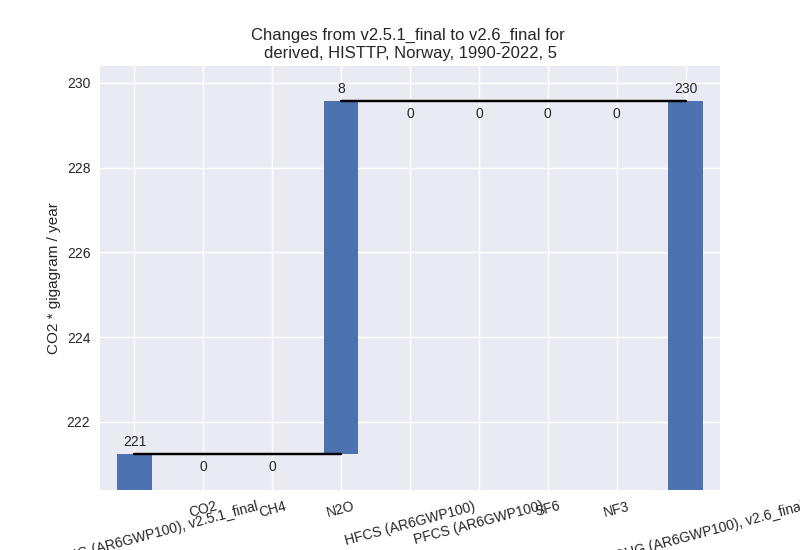Changes in PRIMAP-hist v2.6_final compared to v2.5.1_final for Norway
2024-09-24
Johannes Gütschow
Change analysis for Norway for PRIMAP-hist v2.6_final compared to v2.5.1_final
Overview over emissions by sector and gas
The following figures show the aggregate national total emissions excluding LULUCF AR6GWP100 for the country reported priority scenario. The dotted linesshow the v2.5.1_final data.
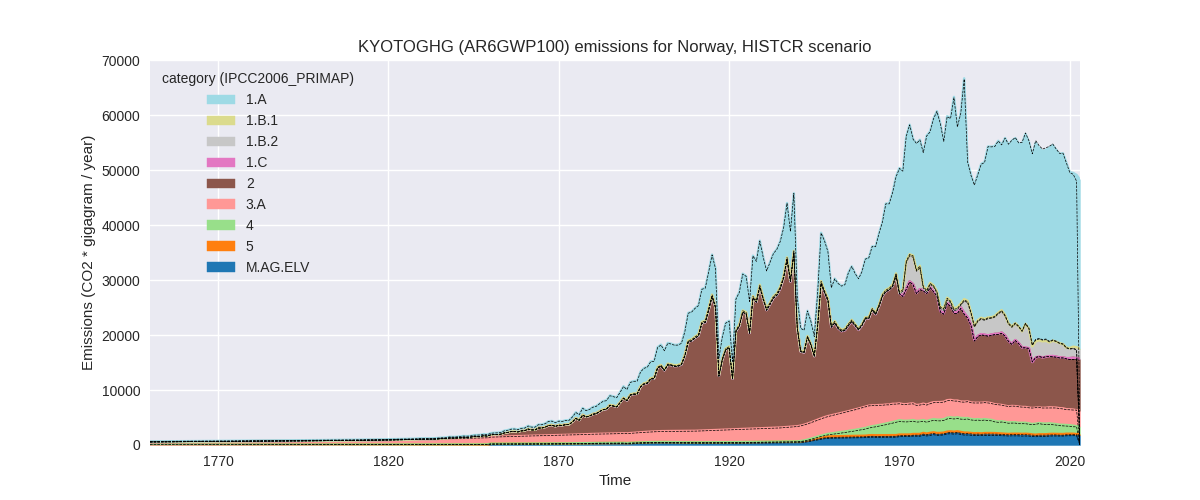

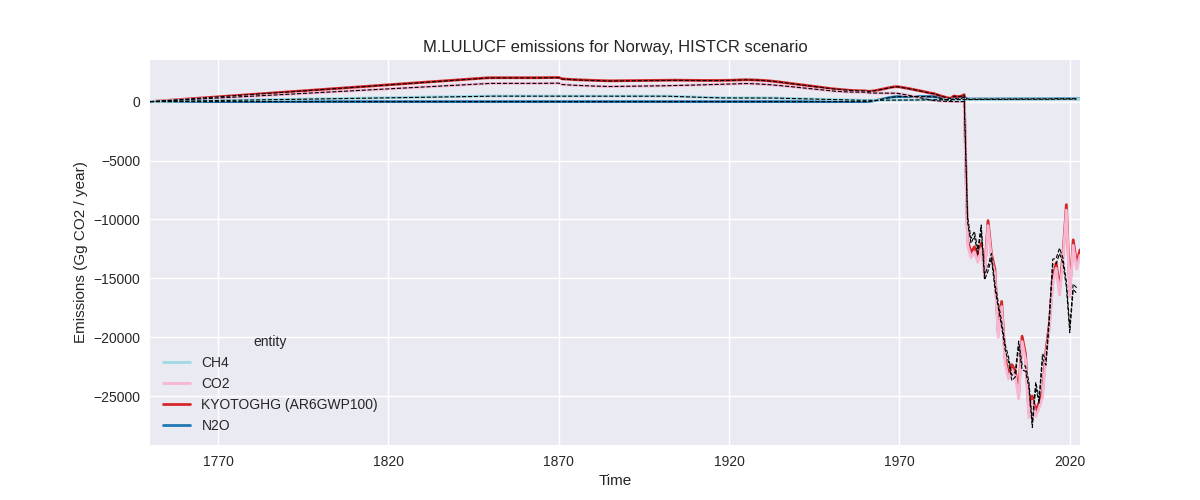
The following figures show the aggregate national total emissions excluding LULUCF AR6GWP100 for the third party priority scenario. The dotted linesshow the v2.5.1_final data.
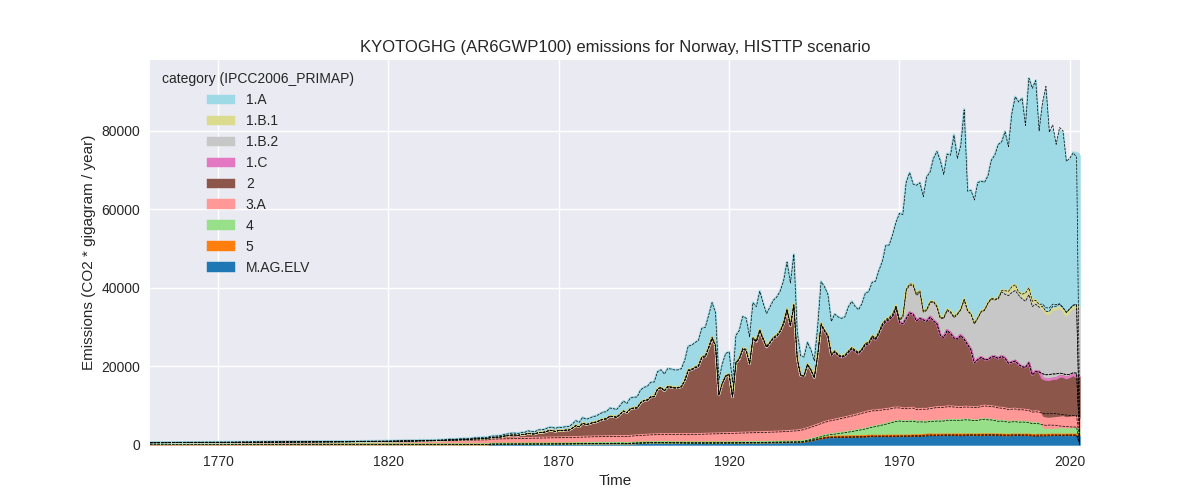
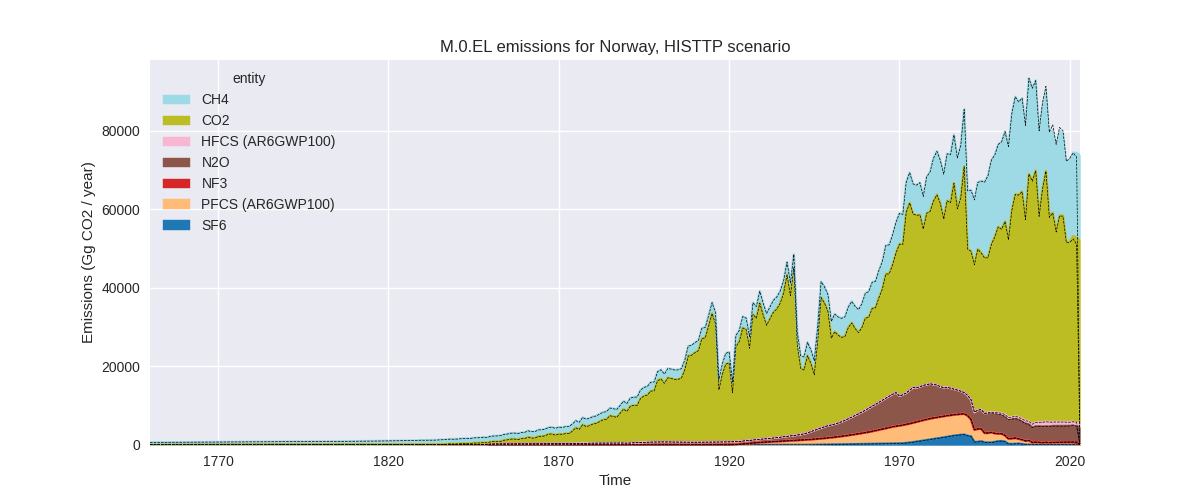
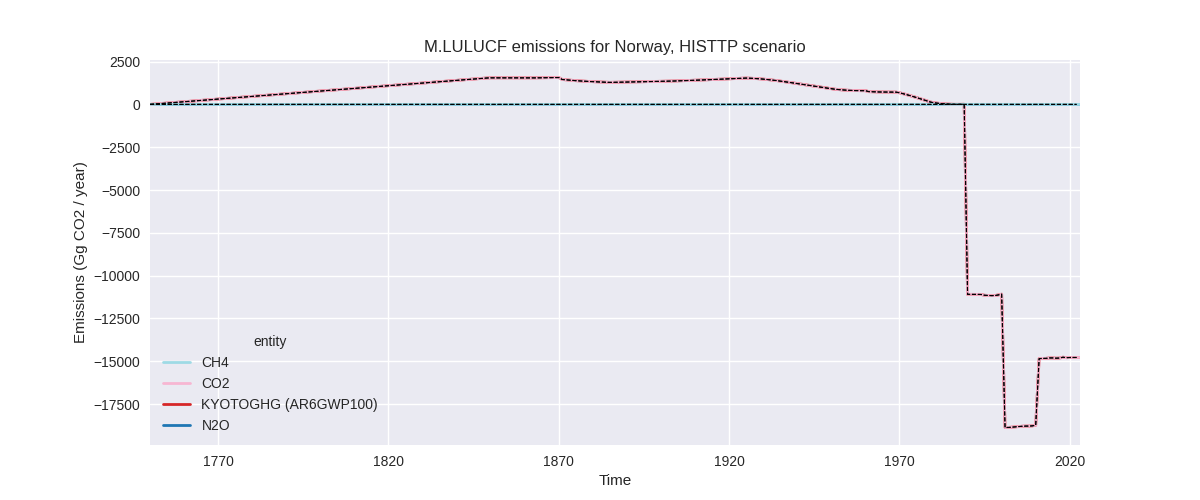
Overview over changes
In the country reported priority scenario we have the following changes for aggregate Kyoto GHG and national total emissions excluding LULUCF (M.0.EL):
- Emissions in 2022 have changed by 2.4%% (1130.65 Gg CO2 / year)
- Emissions in 1990-2022 have changed by -0.1%% (-45.60 Gg CO2 / year)
In the third party priority scenario we have the following changes for aggregate Kyoto GHG and national total emissions excluding LULUCF (M.0.EL):
- Emissions in 2022 have changed by 1.4%% (1008.43 Gg CO2 / year)
- Emissions in 1990-2022 have changed by -0.3%% (-215.61 Gg CO2 / year)
Most important changes per scenario and time frame
In the country reported priority scenario the following sector-gas combinations have the highest absolute impact on national total KyotoGHG (AR6GWP100) emissions in 2022 (top 5):
- 1: 1.A, CO2 with 673.16 Gg CO2 / year (2.2%)
- 2: 1.B.2, CO2 with 386.76 Gg CO2 / year (32.9%)
- 3: 3.A, CH4 with -145.82 Gg CO2 / year (-4.9%)
- 4: 2, CO2 with 134.07 Gg CO2 / year (1.7%)
- 5: 1.B.2, CH4 with -108.36 Gg CO2 / year (-23.1%)
In the country reported priority scenario the following sector-gas combinations have the highest absolute impact on national total KyotoGHG (AR6GWP100) emissions in 1990-2022 (top 5):
- 1: M.AG.ELV, N2O with 157.07 Gg CO2 / year (10.3%)
- 2: 1.B.2, CH4 with -135.48 Gg CO2 / year (-19.6%)
- 3: 3.A, CH4 with -123.51 Gg CO2 / year (-4.1%)
- 4: 2, CO2 with 109.18 Gg CO2 / year (1.4%)
- 5: 1.A, CH4 with -53.29 Gg CO2 / year (-8.7%)
In the third party priority scenario the following sector-gas combinations have the highest absolute impact on national total KyotoGHG (AR6GWP100) emissions in 2022 (top 5):
- 1: 1.A, CO2 with 1874.26 Gg CO2 / year (5.1%)
- 2: 4, CH4 with -624.05 Gg CO2 / year (-33.7%)
- 3: 2, PFCS (AR6GWP100) with -326.26 Gg CO2 / year (-47.3%)
- 4: 4, CO2 with 54.08 Gg CO2 / year (31392.6%)
- 5: 2, CO2 with -39.63 Gg CO2 / year (-0.5%)
In the third party priority scenario the following sector-gas combinations have the highest absolute impact on national total KyotoGHG (AR6GWP100) emissions in 1990-2022 (top 5):
- 1: 4, CH4 with -344.96 Gg CO2 / year (-11.7%)
- 2: 1.A, CO2 with 77.20 Gg CO2 / year (0.2%)
- 3: 4, CO2 with 33.11 Gg CO2 / year (16889.8%)
- 4: 2, PFCS (AR6GWP100) with -9.89 Gg CO2 / year (-0.6%)
- 5: 1.C, CO2 with 8.98 Gg CO2 / year (34.0%)
Notes on data changes
Here we list notes explaining important emissions changes for the country. ’' means that the following text only applies to the TP time series, while means that it only applies to the CR scenario. Otherwise the note applies to both scenarios.
- We have added EEA 2024 inventory data.
- Energy CO2 emissions are higher for 2022 because the 2022 growth rates in EEA2024 and EI2024 are higher than in EI2023 (CR, TP). The same is true for CO2 from 1.B.2 in the CR scenario.
- Cumulative agricultural emissions have changed in the CR scenario due to differences between EEA2024 and CRF2023.
- CH4 in 1.B.2 is much lower both for 2022 and cumulative emissions due do changes from CRF2023 to EEA 2024 (CR).
- Changes in sectors 4 and 5 in the TP scenario are due to the removal of FAOSTAT data.
Changes by sector and gas
For each scenario and time frame the changes are displayed for all individual sectors and all individual gases. In the sector plot we use aggregate Kyoto GHGs in AR6GWP100. In the gas plot we usenational total emissions without LULUCF. ## country reported scenario
2022
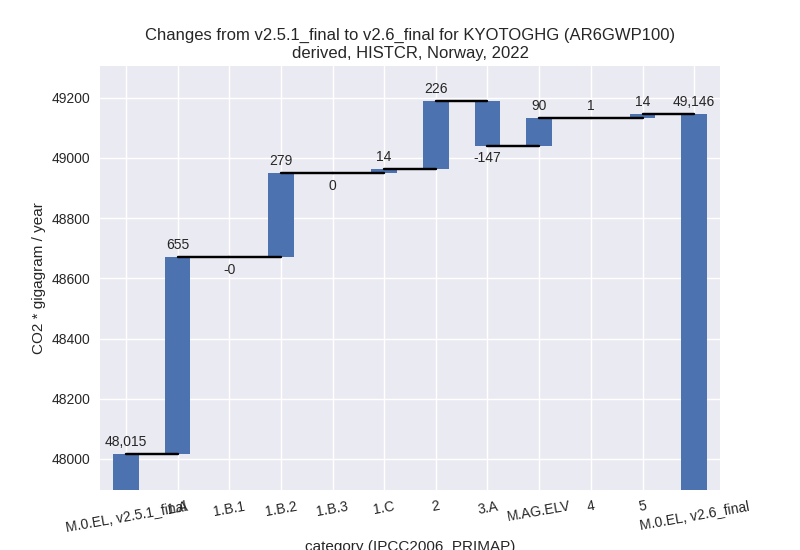
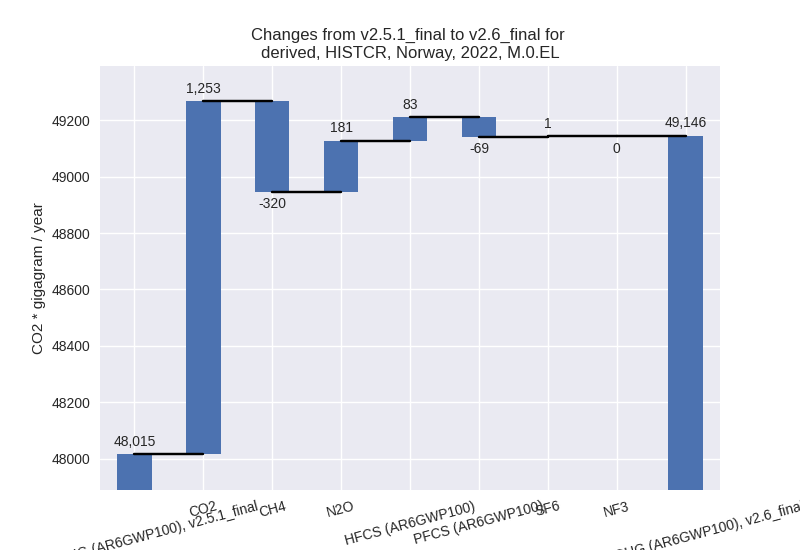
1990-2022
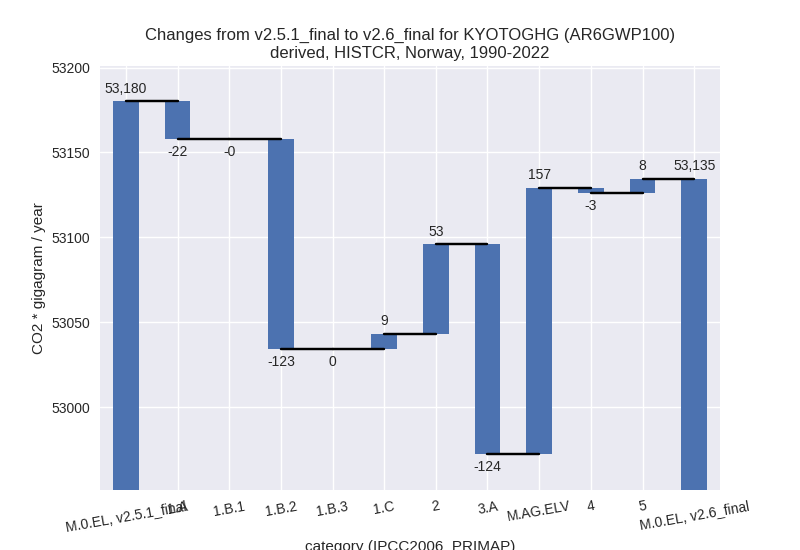
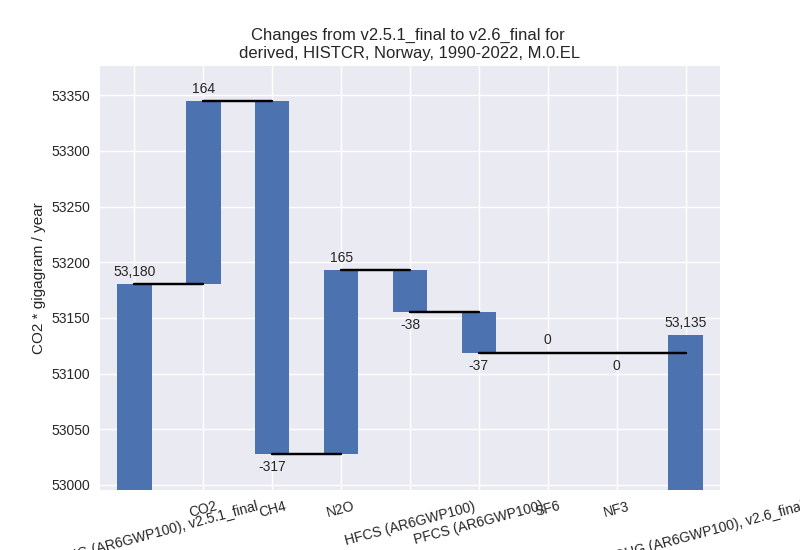
third party scenario
2022
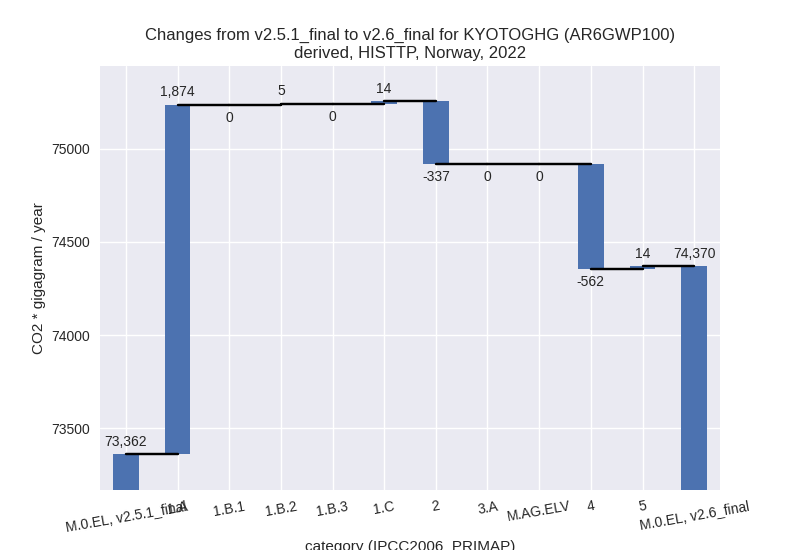
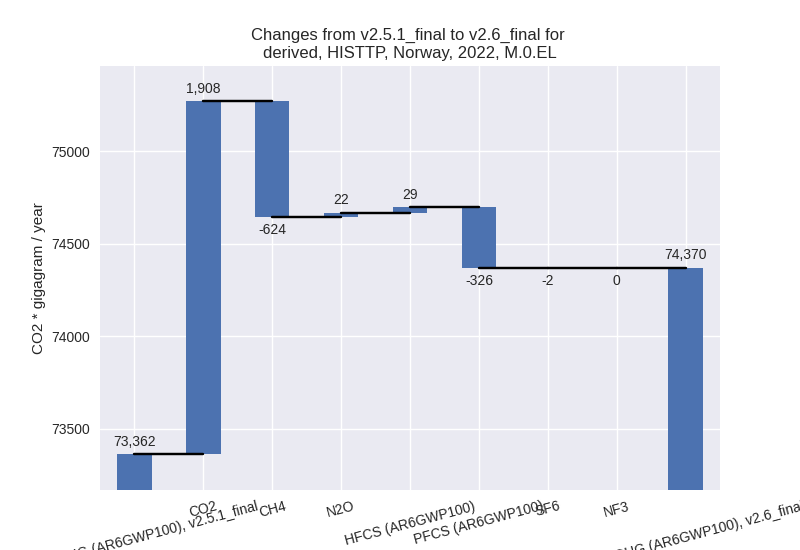
1990-2022
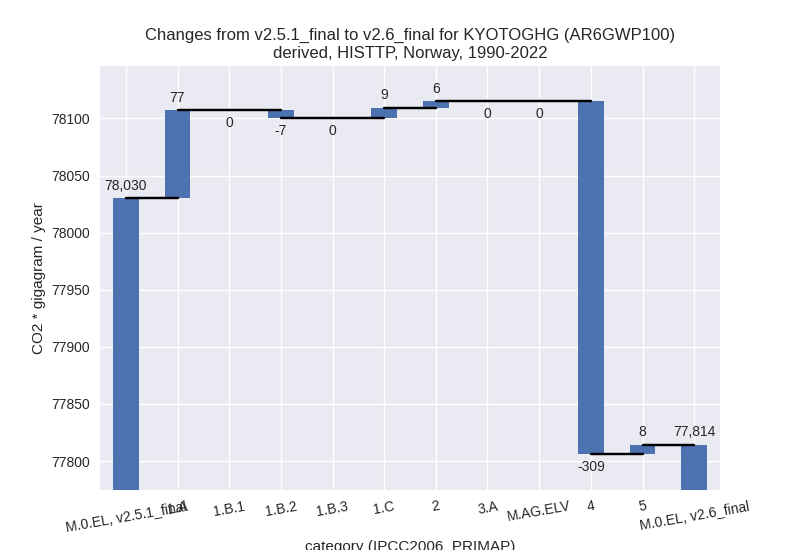
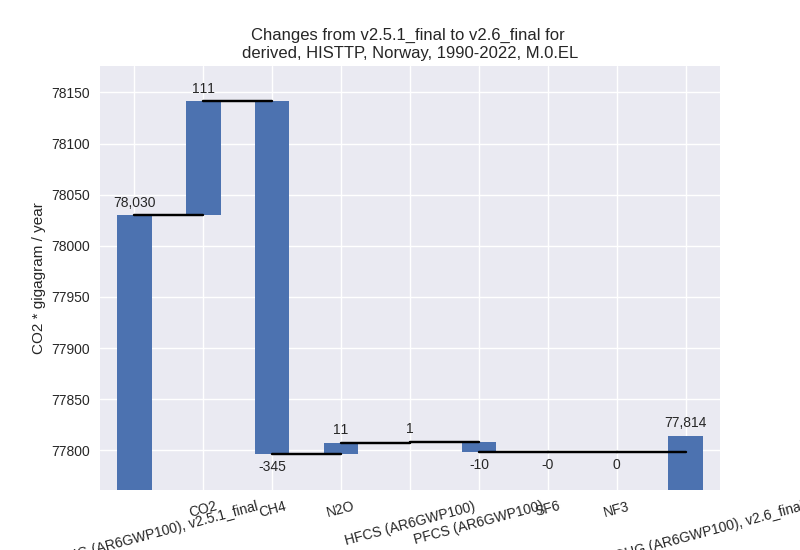
Detailed changes for the scenarios:
country reported scenario (HISTCR):
Most important changes per time frame
For 2022 the following sector-gas combinations have the highest absolute impact on national total KyotoGHG (AR6GWP100) emissions in 2022 (top 5):
- 1: 1.A, CO2 with 673.16 Gg CO2 / year (2.2%)
- 2: 1.B.2, CO2 with 386.76 Gg CO2 / year (32.9%)
- 3: 3.A, CH4 with -145.82 Gg CO2 / year (-4.9%)
- 4: 2, CO2 with 134.07 Gg CO2 / year (1.7%)
- 5: 1.B.2, CH4 with -108.36 Gg CO2 / year (-23.1%)
For 1990-2022 the following sector-gas combinations have the highest absolute impact on national total KyotoGHG (AR6GWP100) emissions in 1990-2022 (top 5):
- 1: M.AG.ELV, N2O with 157.07 Gg CO2 / year (10.3%)
- 2: 1.B.2, CH4 with -135.48 Gg CO2 / year (-19.6%)
- 3: 3.A, CH4 with -123.51 Gg CO2 / year (-4.1%)
- 4: 2, CO2 with 109.18 Gg CO2 / year (1.4%)
- 5: 1.A, CH4 with -53.29 Gg CO2 / year (-8.7%)
Changes in the main sectors for aggregate KyotoGHG (AR6GWP100) are
- 1: Total sectoral emissions in 2022 are 33360.74 Gg
CO2 / year which is 67.9% of M.0.EL emissions. 2022 Emissions have
changed by 2.9% (946.88 Gg CO2 /
year). 1990-2022 Emissions have changed by -0.4% (-136.85 Gg CO2 / year). For 2022
the changes per gas
are:
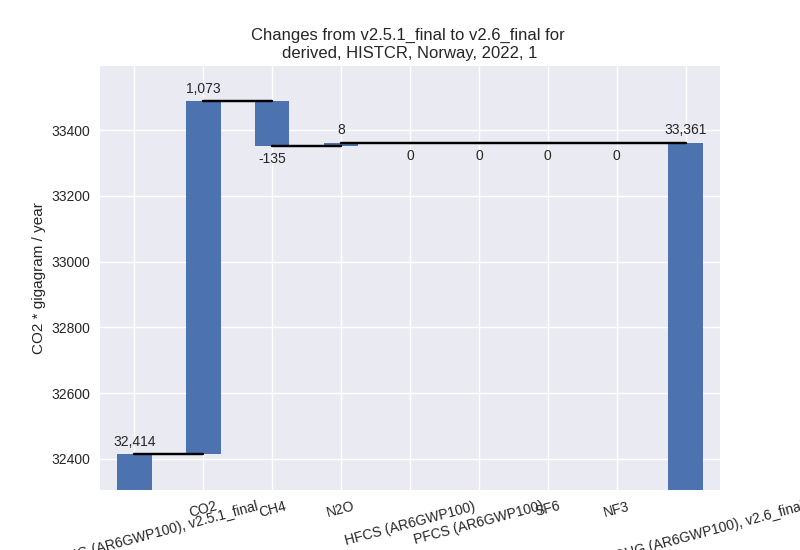
The changes come from the following subsectors:- 1.A: Total sectoral emissions in 2022 are 31344.51
Gg CO2 / year which is 94.0% of category 1 emissions. 2022 Emissions
have changed by 2.1% (655.07 Gg CO2
/ year). 1990-2022 Emissions have changed by -0.1% (-22.49 Gg CO2 / year). For 2022 the
changes per gas
are:
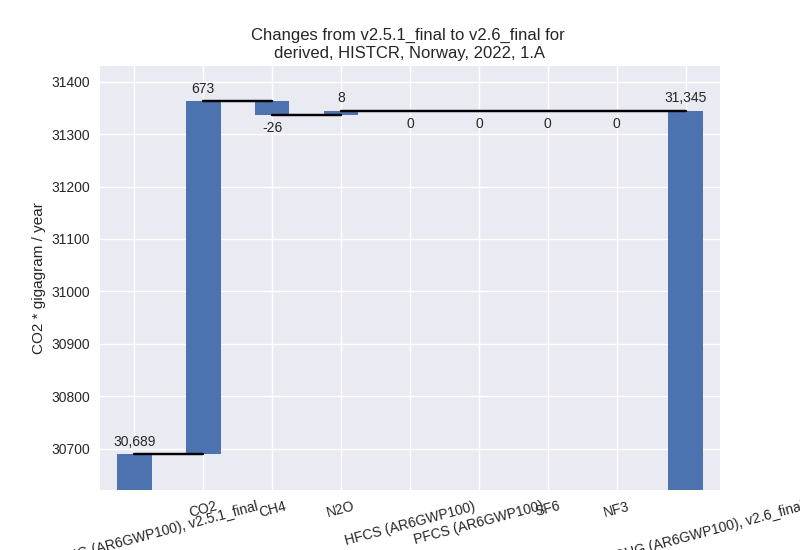
There is no subsector information available in PRIMAP-hist. - 1.B.1: Total sectoral emissions in 2022 are 77.92 Gg CO2 / year which is 0.2% of category 1 emissions. 2022 Emissions have changed by -0.6% (-0.47 Gg CO2 / year). 1990-2022 Emissions have changed by -0.0% (-0.01 Gg CO2 / year).
- 1.B.2: Total sectoral emissions in 2022 are 1924.75
Gg CO2 / year which is 5.8% of category 1 emissions. 2022 Emissions have
changed by 16.9% (278.71 Gg CO2 /
year). 1990-2022 Emissions have changed by -4.2% (-123.33 Gg CO2 / year). For 2022
the changes per gas
are:
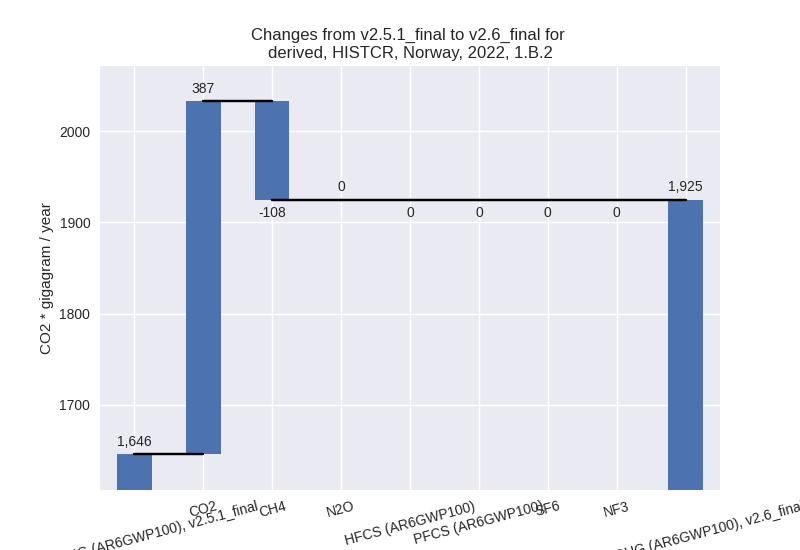
For 1990-2022 the changes per gas are: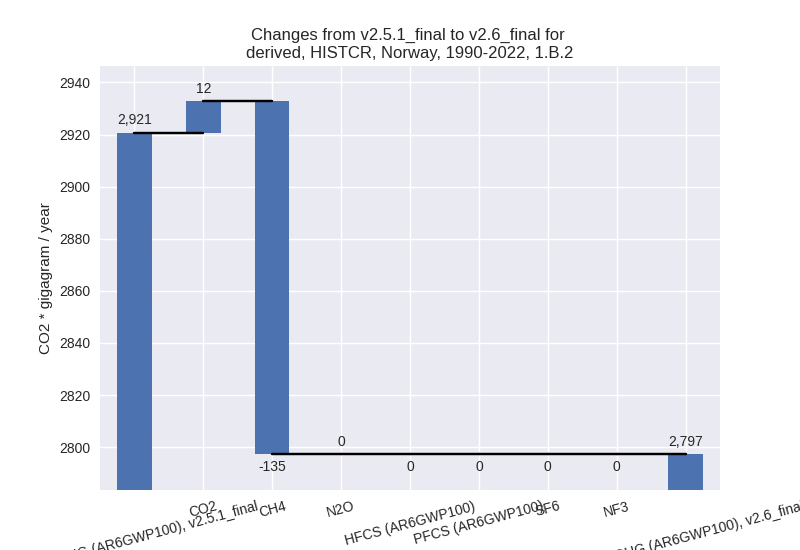
There is no subsector information available in PRIMAP-hist. - 1.C: Total sectoral emissions in 2022 are 13.57 Gg
CO2 / year which is 0.0% of category 1 emissions. 2022 Emissions have
changed by inf% (13.57 Gg CO2 /
year). 1990-2022 Emissions have changed by 34.0% (8.98 Gg CO2 / year). For 2022 the
changes per gas
are:

For 1990-2022 the changes per gas are: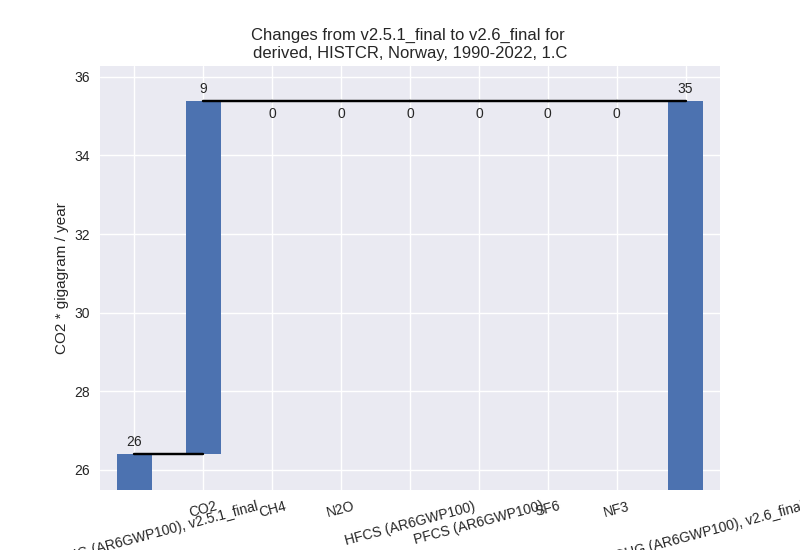
There is no subsector information available in PRIMAP-hist.
- 1.A: Total sectoral emissions in 2022 are 31344.51
Gg CO2 / year which is 94.0% of category 1 emissions. 2022 Emissions
have changed by 2.1% (655.07 Gg CO2
/ year). 1990-2022 Emissions have changed by -0.1% (-22.49 Gg CO2 / year). For 2022 the
changes per gas
are:
- 2: Total sectoral emissions in 2022 are 9472.74 Gg
CO2 / year which is 19.3% of M.0.EL emissions. 2022 Emissions have
changed by 2.4% (226.15 Gg CO2 /
year). 1990-2022 Emissions have changed by 0.5% (52.55 Gg CO2 / year). For 2022 the
changes per gas
are:
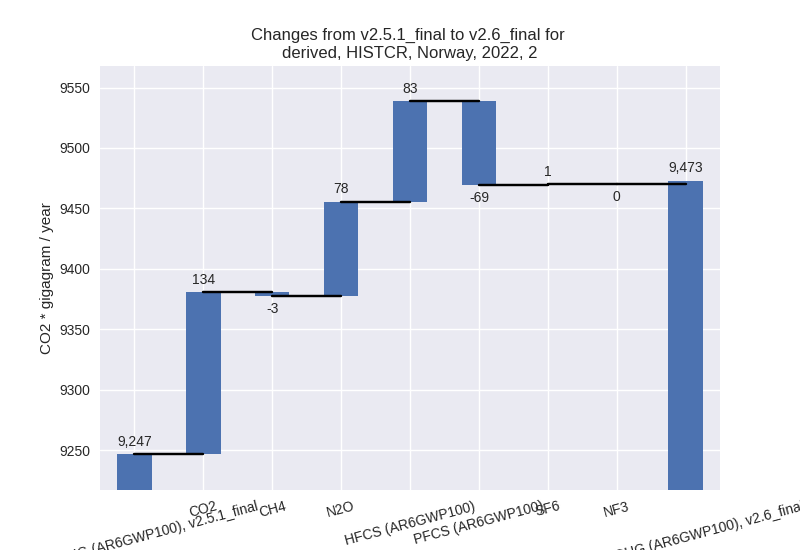
- M.AG: Total sectoral emissions in 2022 are 4684.05 Gg CO2 / year which is 9.5% of M.0.EL emissions. 2022 Emissions have changed by -1.2% (-56.99 Gg CO2 / year). 1990-2022 Emissions have changed by 0.7% (33.52 Gg CO2 / year).
- 4: Total sectoral emissions in 2022 are 1428.43 Gg CO2 / year which is 2.9% of M.0.EL emissions. 2022 Emissions have changed by 0.0% (0.58 Gg CO2 / year). 1990-2022 Emissions have changed by -0.2% (-3.15 Gg CO2 / year).
- 5: Total sectoral emissions in 2022 are 200.10 Gg
CO2 / year which is 0.4% of M.0.EL emissions. 2022 Emissions have
changed by 7.5% (14.02 Gg CO2 /
year). 1990-2022 Emissions have changed by 3.8% (8.33 Gg CO2 / year). For 2022 the
changes per gas
are:
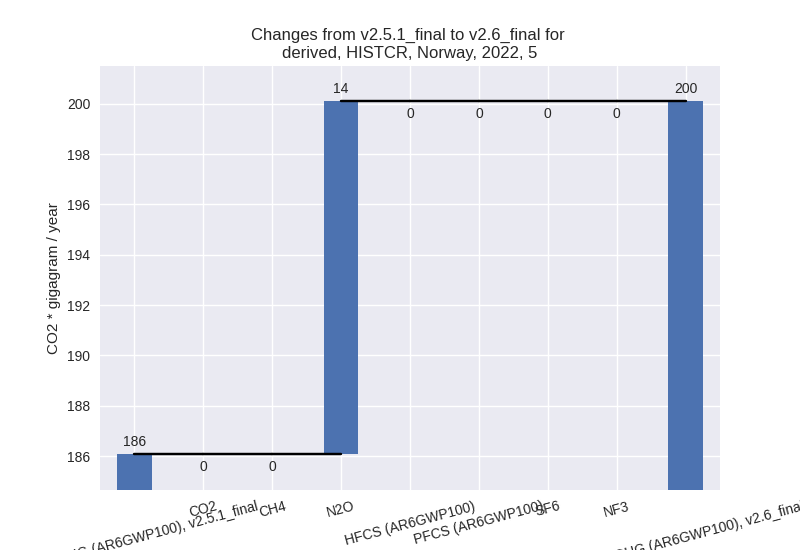
For 1990-2022 the changes per gas are: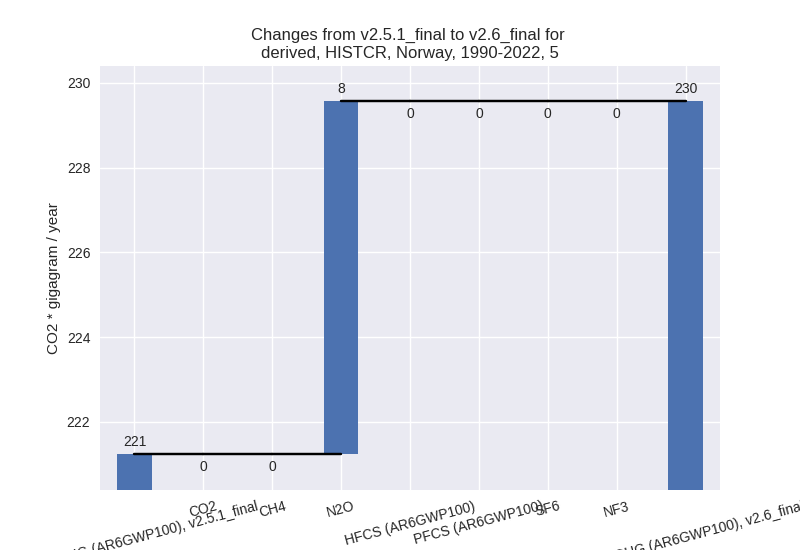
third party scenario (HISTTP):
Most important changes per time frame
For 2022 the following sector-gas combinations have the highest absolute impact on national total KyotoGHG (AR6GWP100) emissions in 2022 (top 5):
- 1: 1.A, CO2 with 1874.26 Gg CO2 / year (5.1%)
- 2: 4, CH4 with -624.05 Gg CO2 / year (-33.7%)
- 3: 2, PFCS (AR6GWP100) with -326.26 Gg CO2 / year (-47.3%)
- 4: 4, CO2 with 54.08 Gg CO2 / year (31392.6%)
- 5: 2, CO2 with -39.63 Gg CO2 / year (-0.5%)
For 1990-2022 the following sector-gas combinations have the highest absolute impact on national total KyotoGHG (AR6GWP100) emissions in 1990-2022 (top 5):
- 1: 4, CH4 with -344.96 Gg CO2 / year (-11.7%)
- 2: 1.A, CO2 with 77.20 Gg CO2 / year (0.2%)
- 3: 4, CO2 with 33.11 Gg CO2 / year (16889.8%)
- 4: 2, PFCS (AR6GWP100) with -9.89 Gg CO2 / year (-0.6%)
- 5: 1.C, CO2 with 8.98 Gg CO2 / year (34.0%)
Changes in the main sectors for aggregate KyotoGHG (AR6GWP100) are
- 1: Total sectoral emissions in 2022 are 56960.71 Gg
CO2 / year which is 76.6% of M.0.EL emissions. 2022 Emissions have
changed by 3.4% (1893.16 Gg CO2 /
year). 1990-2022 Emissions have changed by 0.1% (79.48 Gg CO2 / year). For 2022 the
changes per gas
are:
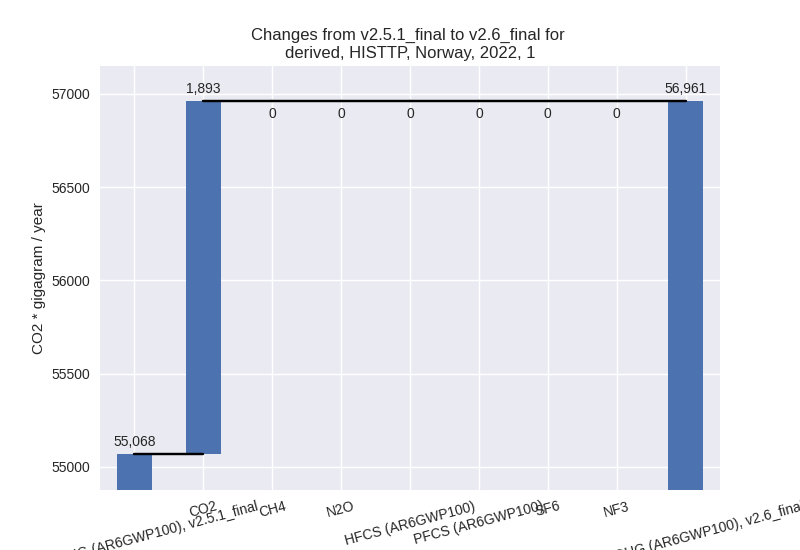
The changes come from the following subsectors:- 1.A: Total sectoral emissions in 2022 are 39451.80
Gg CO2 / year which is 69.3% of category 1 emissions. 2022 Emissions
have changed by 5.0% (1874.26 Gg CO2
/ year). 1990-2022 Emissions have changed by 0.2% (77.20 Gg CO2 / year). For 2022 the
changes per gas
are:
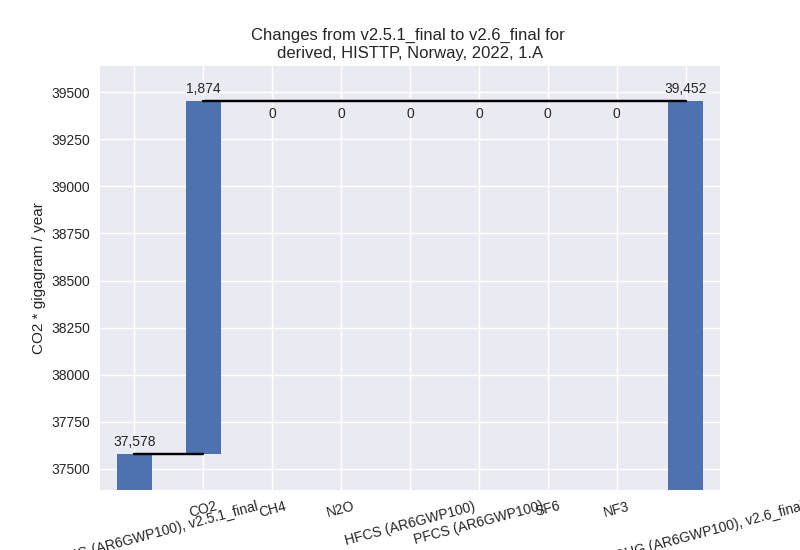
There is no subsector information available in PRIMAP-hist. - 1.B.1: Total sectoral emissions in 2022 are 61.64 Gg CO2 / year which is 0.1% of category 1 emissions. 2022 Emissions have changed by 0.0% (0.00 Gg CO2 / year). 1990-2022 Emissions have changed by 0.0% (0.00 Gg CO2 / year).
- 1.B.2: Total sectoral emissions in 2022 are 17433.70 Gg CO2 / year which is 30.6% of category 1 emissions. 2022 Emissions have changed by 0.0% (5.33 Gg CO2 / year). 1990-2022 Emissions have changed by -0.0% (-6.70 Gg CO2 / year).
- 1.C: Total sectoral emissions in 2022 are 13.57 Gg
CO2 / year which is 0.0% of category 1 emissions. 2022 Emissions have
changed by inf% (13.57 Gg CO2 /
year). 1990-2022 Emissions have changed by 34.0% (8.98 Gg CO2 / year). For 2022 the
changes per gas
are:
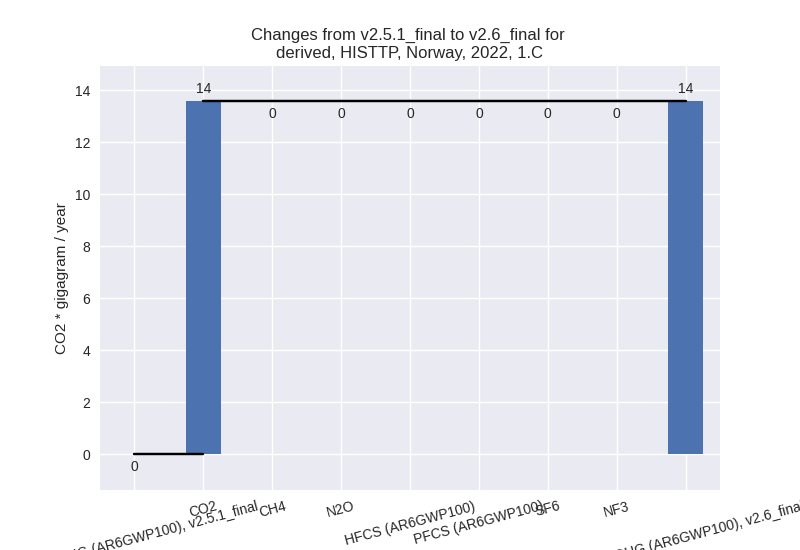
For 1990-2022 the changes per gas are: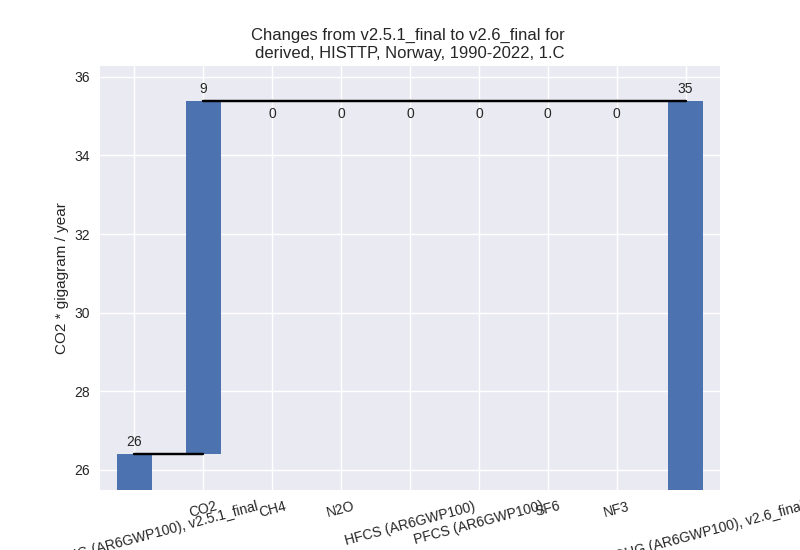
There is no subsector information available in PRIMAP-hist.
- 1.A: Total sectoral emissions in 2022 are 39451.80
Gg CO2 / year which is 69.3% of category 1 emissions. 2022 Emissions
have changed by 5.0% (1874.26 Gg CO2
/ year). 1990-2022 Emissions have changed by 0.2% (77.20 Gg CO2 / year). For 2022 the
changes per gas
are:
- 2: Total sectoral emissions in 2022 are 10426.62 Gg
CO2 / year which is 14.0% of M.0.EL emissions. 2022 Emissions have
changed by -3.1% (-336.63 Gg CO2 /
year). 1990-2022 Emissions have changed by 0.0% (5.63 Gg CO2 / year). For 2022 the
changes per gas
are:
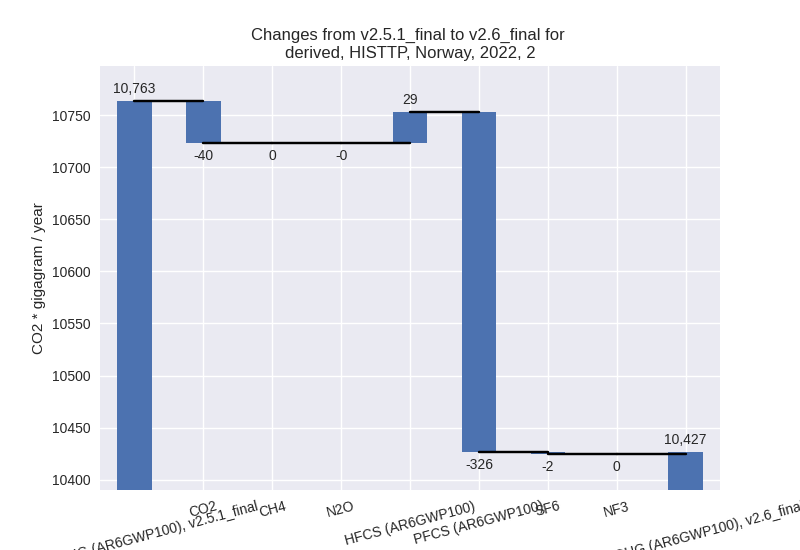
- M.AG: Total sectoral emissions in 2022 are 5364.94 Gg CO2 / year which is 7.2% of M.0.EL emissions. 2022 Emissions have changed by 0.0% (0.00 Gg CO2 / year). 1990-2022 Emissions have changed by 0.0% (0.00 Gg CO2 / year).
- 4: Total sectoral emissions in 2022 are 1417.69 Gg
CO2 / year which is 1.9% of M.0.EL emissions. 2022 Emissions have
changed by -28.4% (-562.12 Gg CO2 /
year). 1990-2022 Emissions have changed by -10.1% (-309.04 Gg CO2 / year). For 2022
the changes per gas
are:

For 1990-2022 the changes per gas are: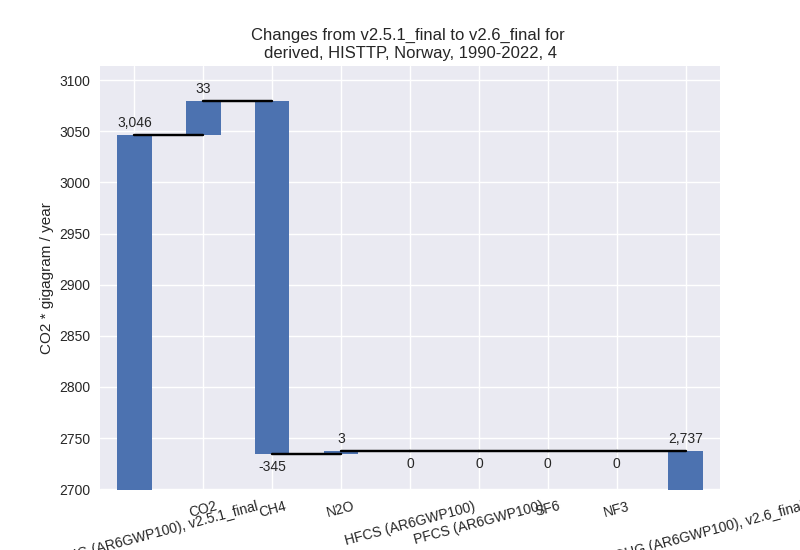
- 5: Total sectoral emissions in 2022 are 200.10 Gg
CO2 / year which is 0.3% of M.0.EL emissions. 2022 Emissions have
changed by 7.5% (14.02 Gg CO2 /
year). 1990-2022 Emissions have changed by 3.8% (8.33 Gg CO2 / year). For 2022 the
changes per gas
are:
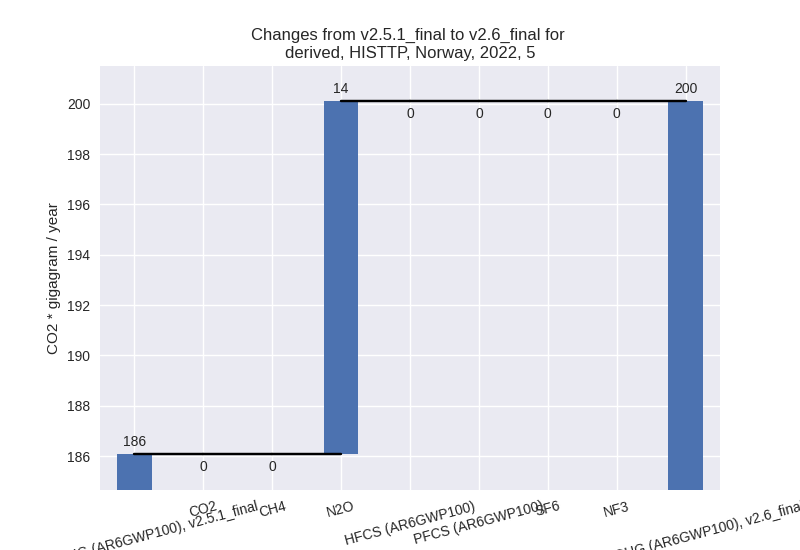
For 1990-2022 the changes per gas are: